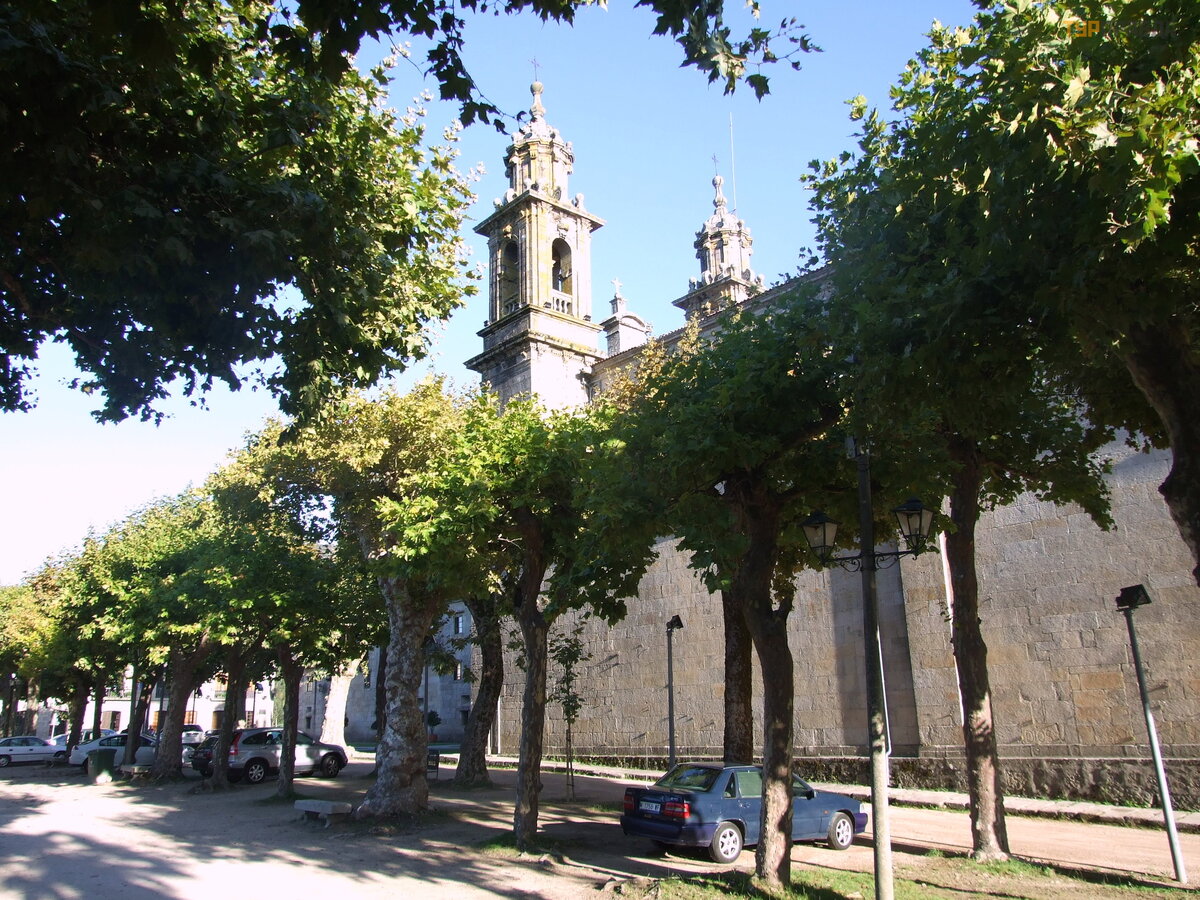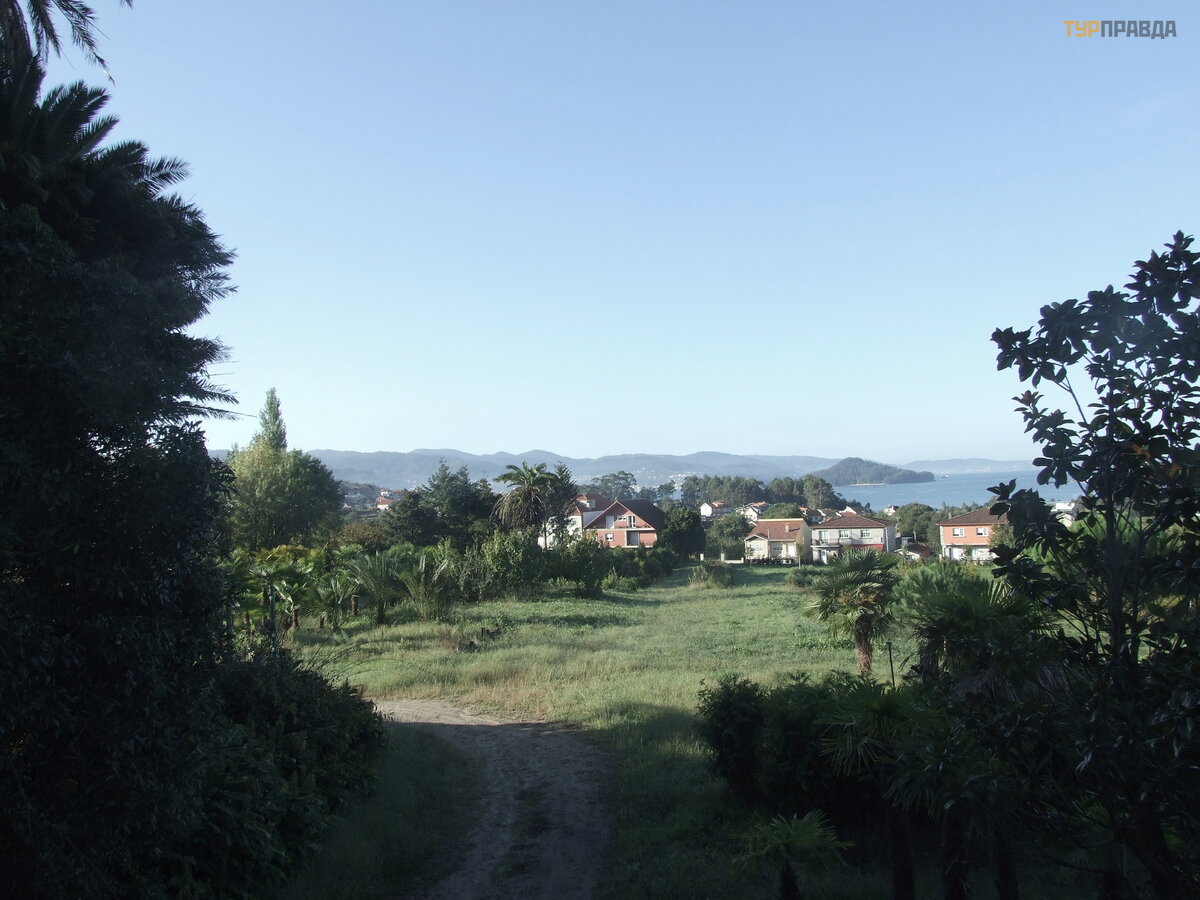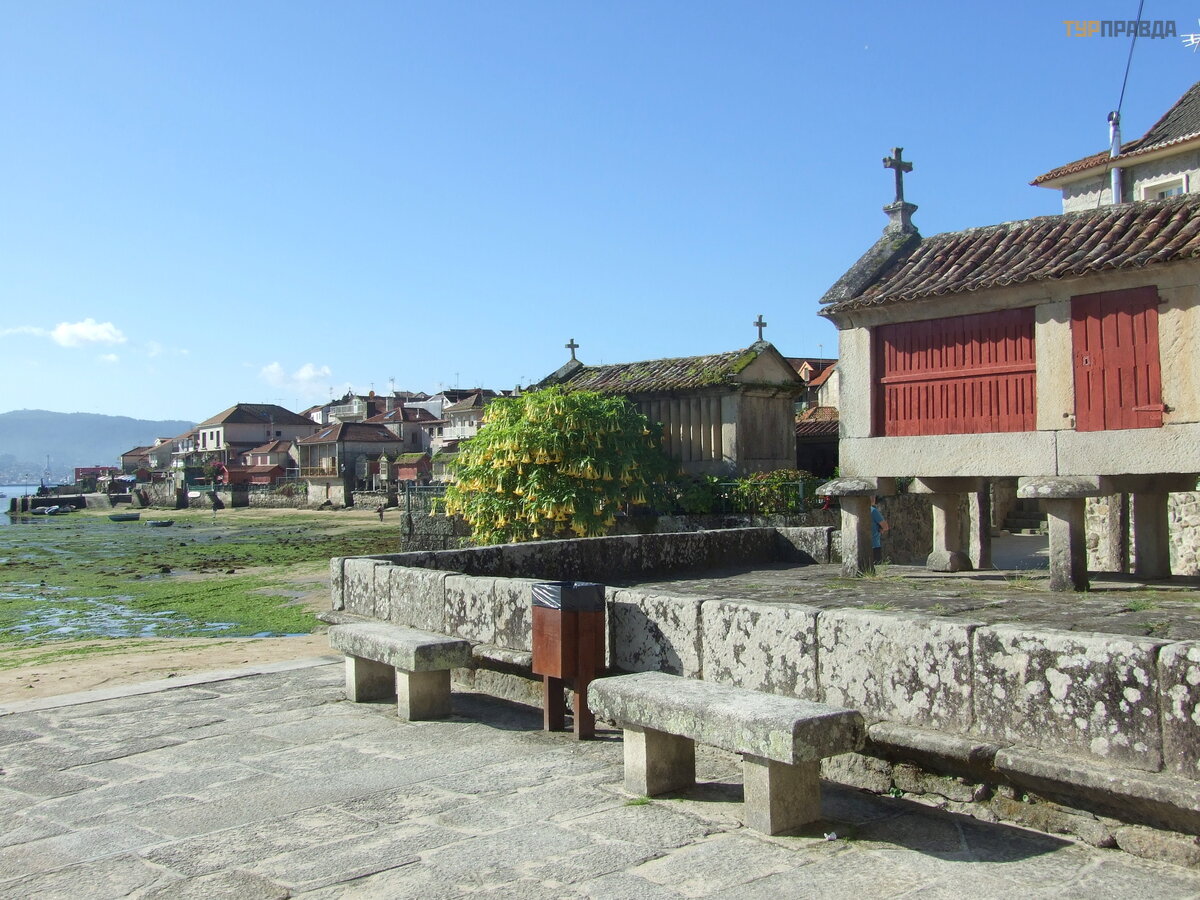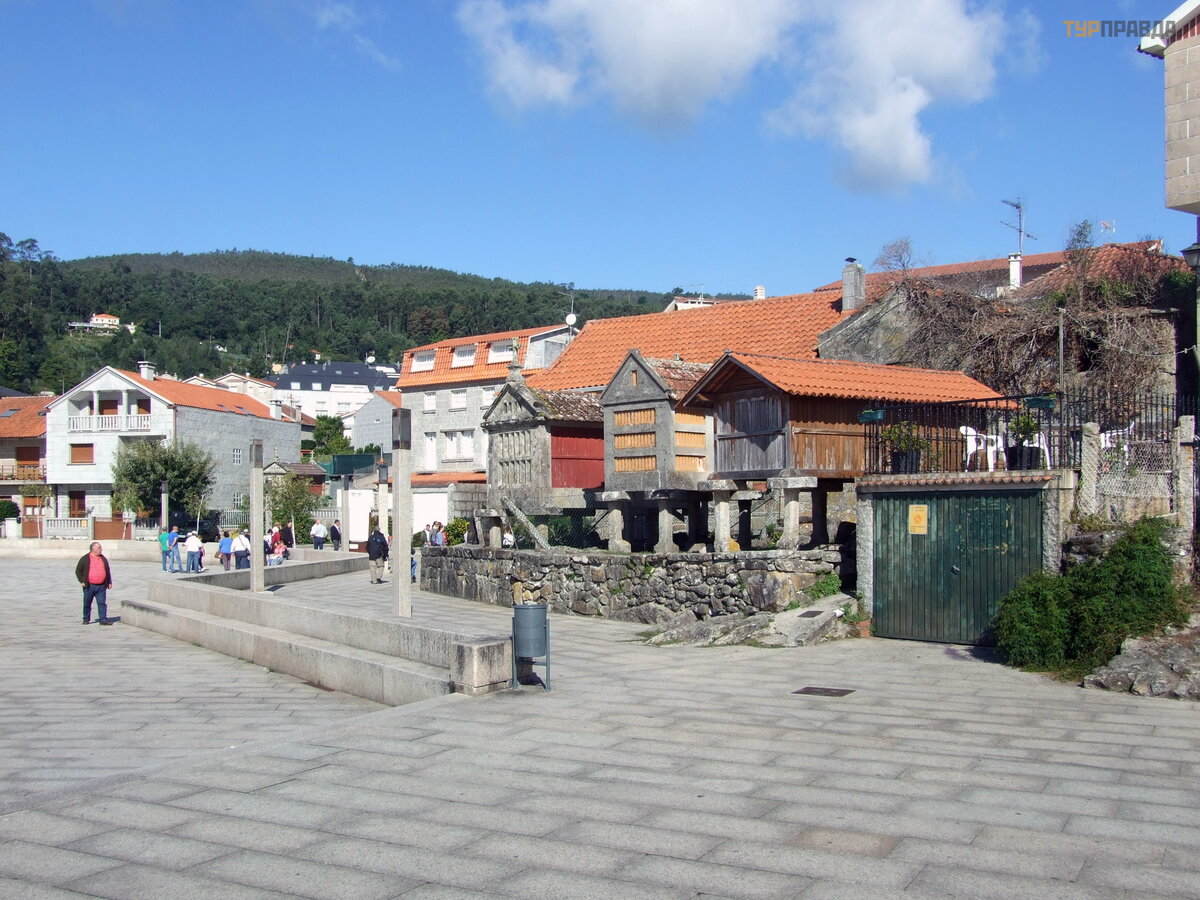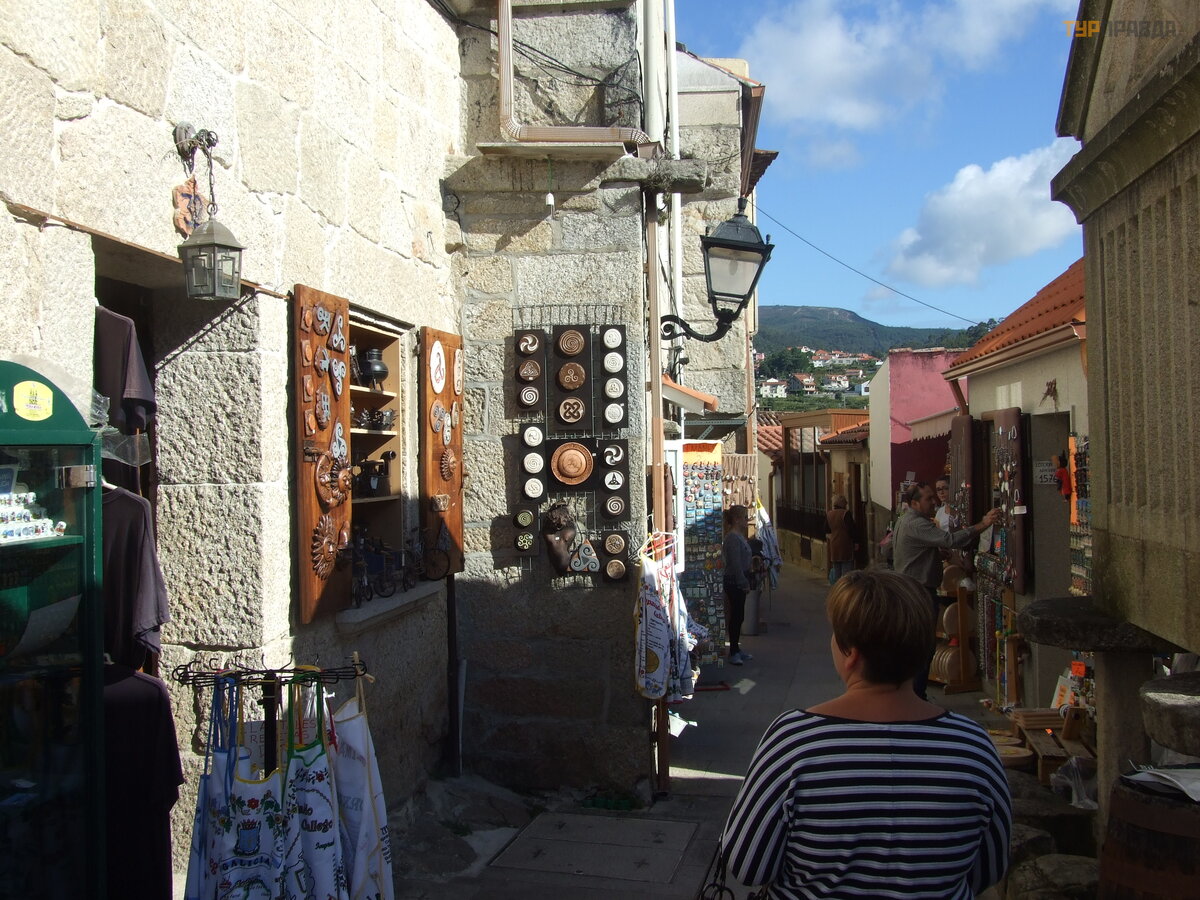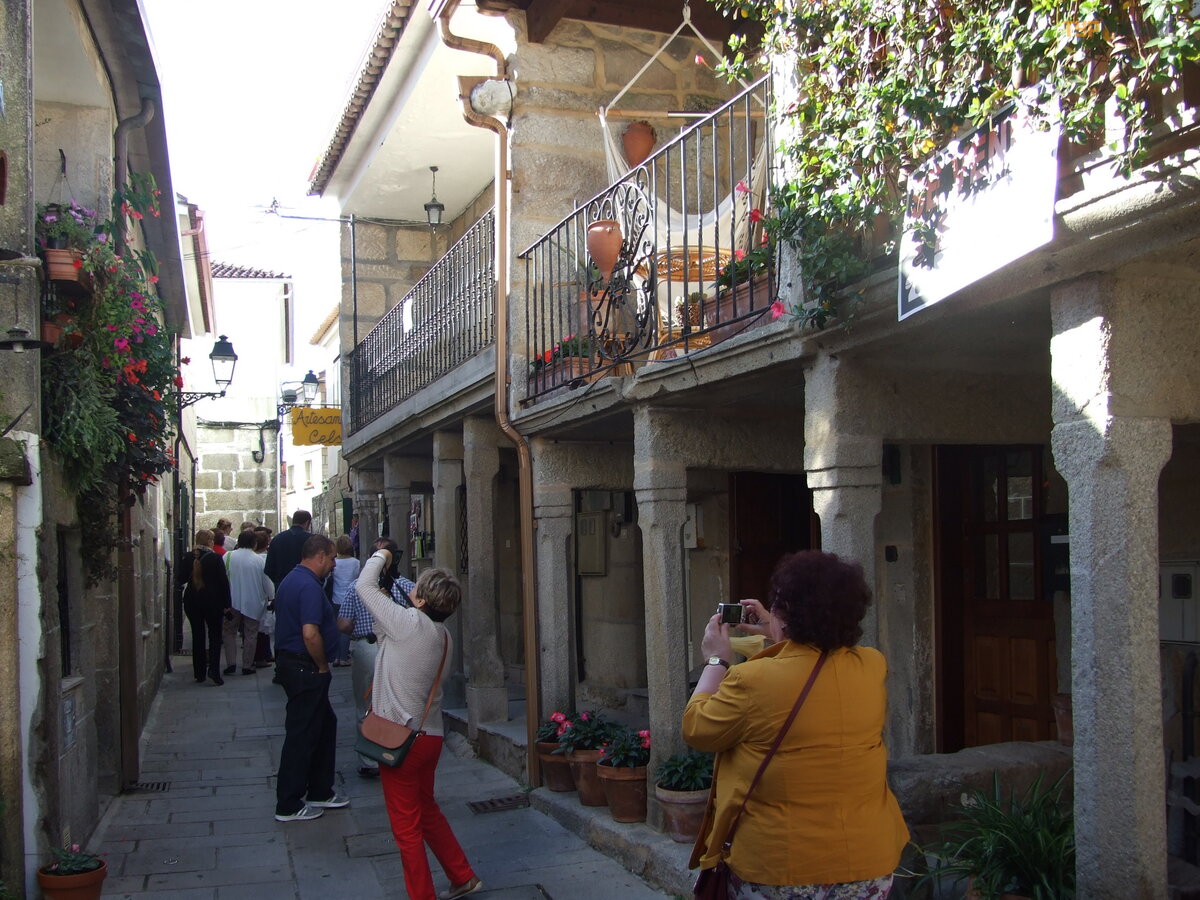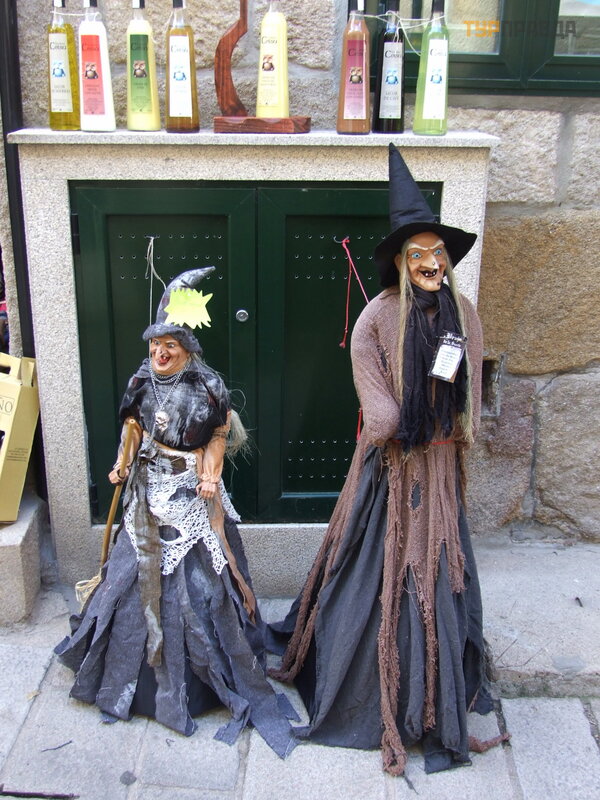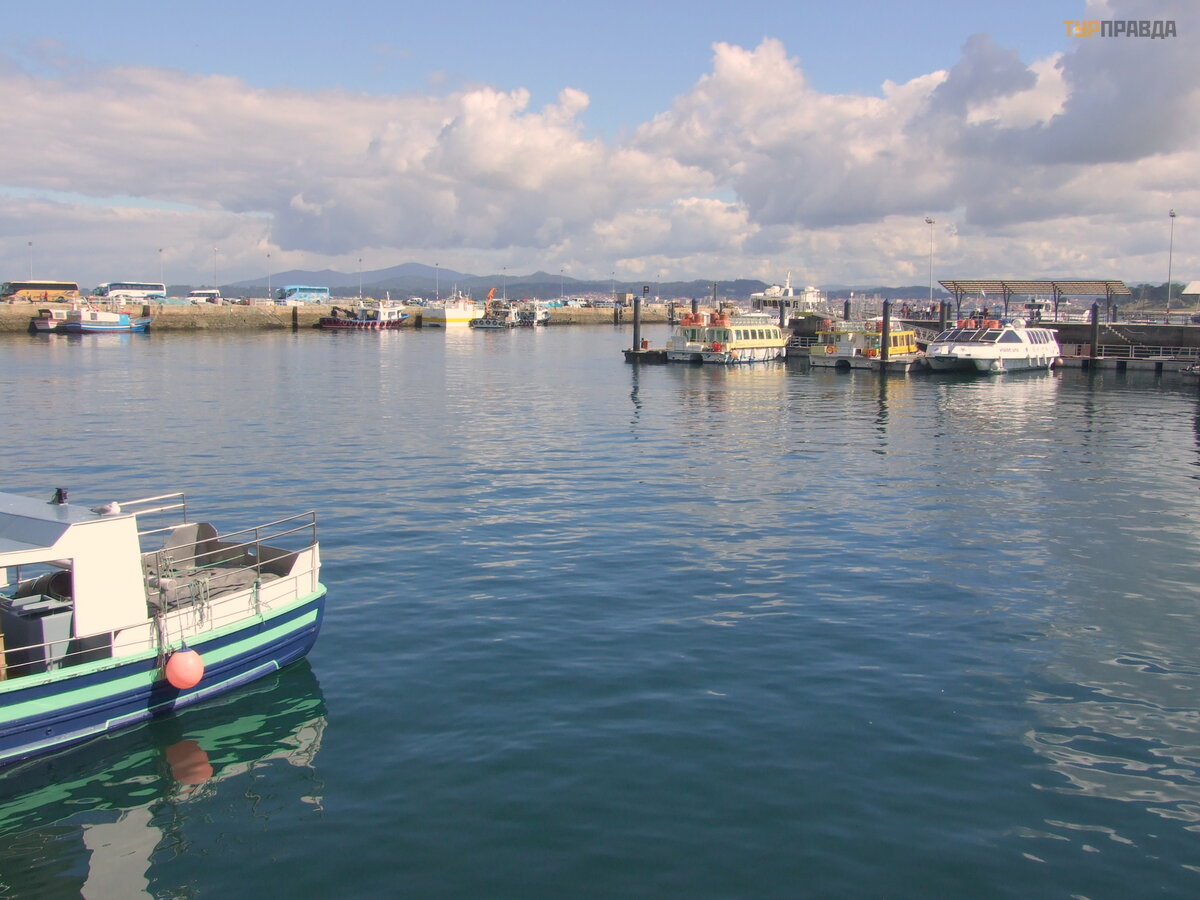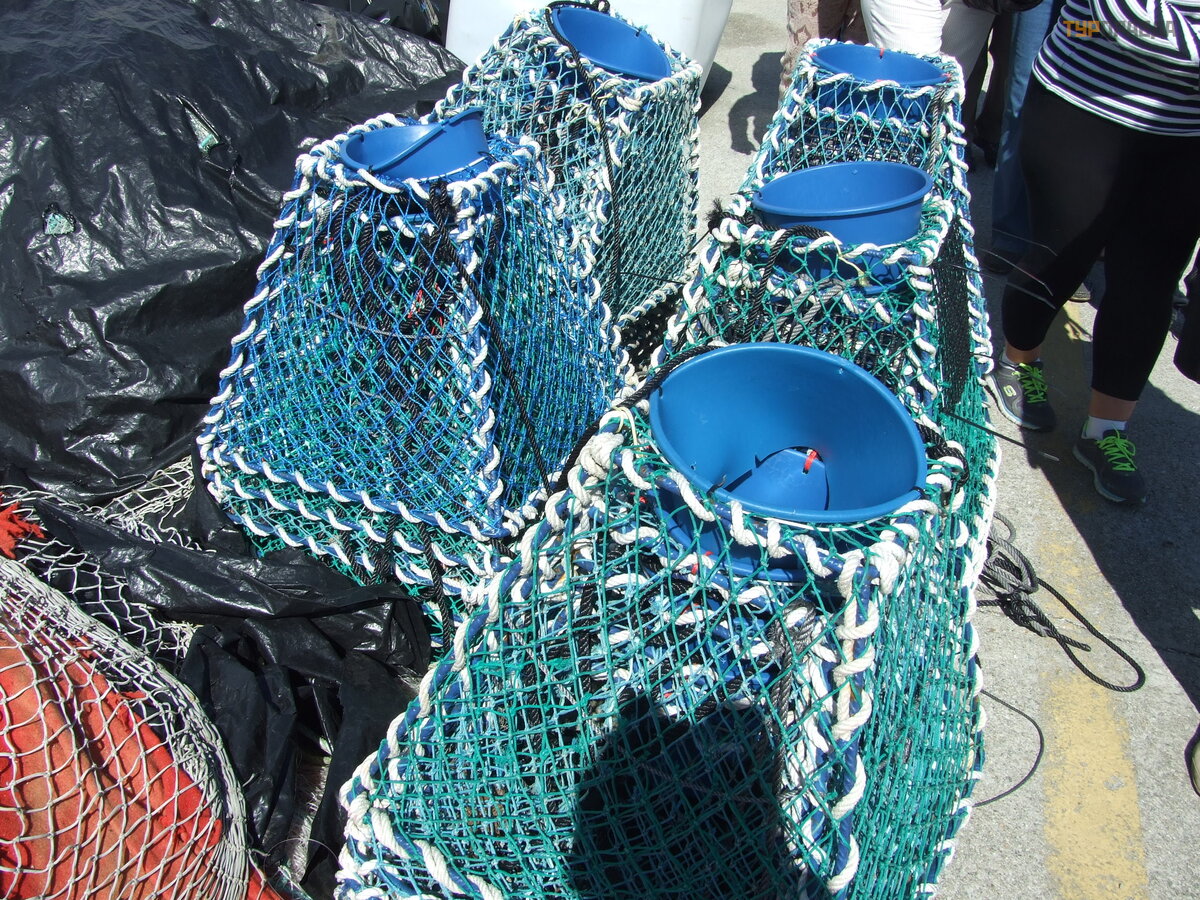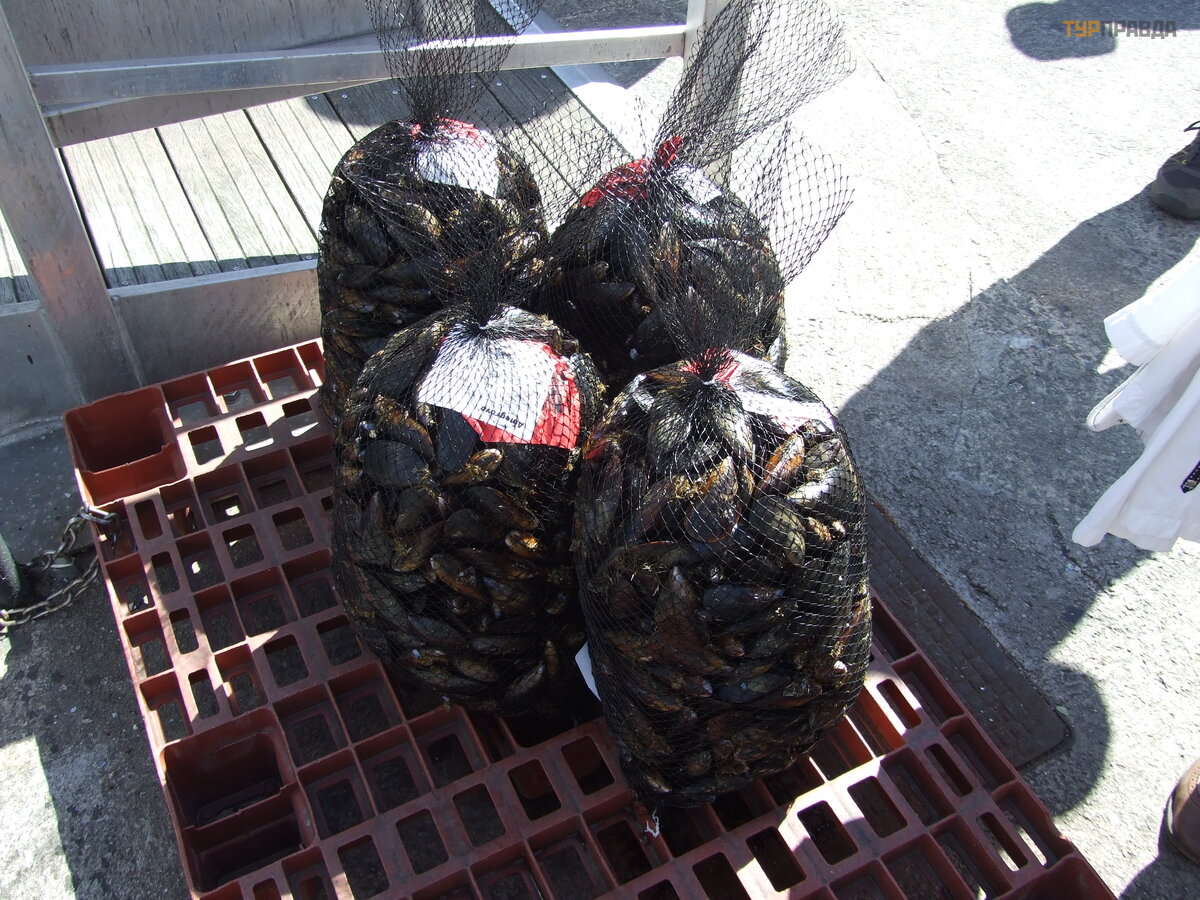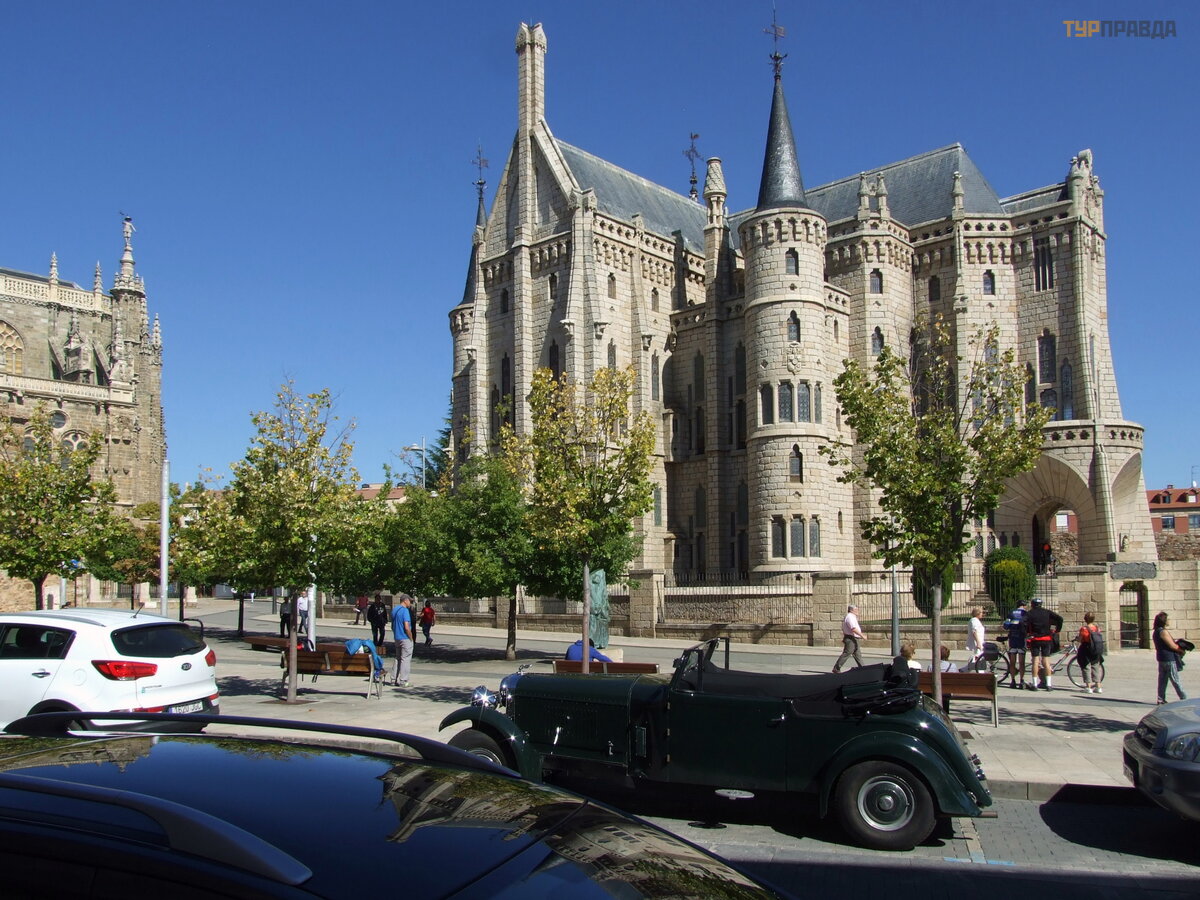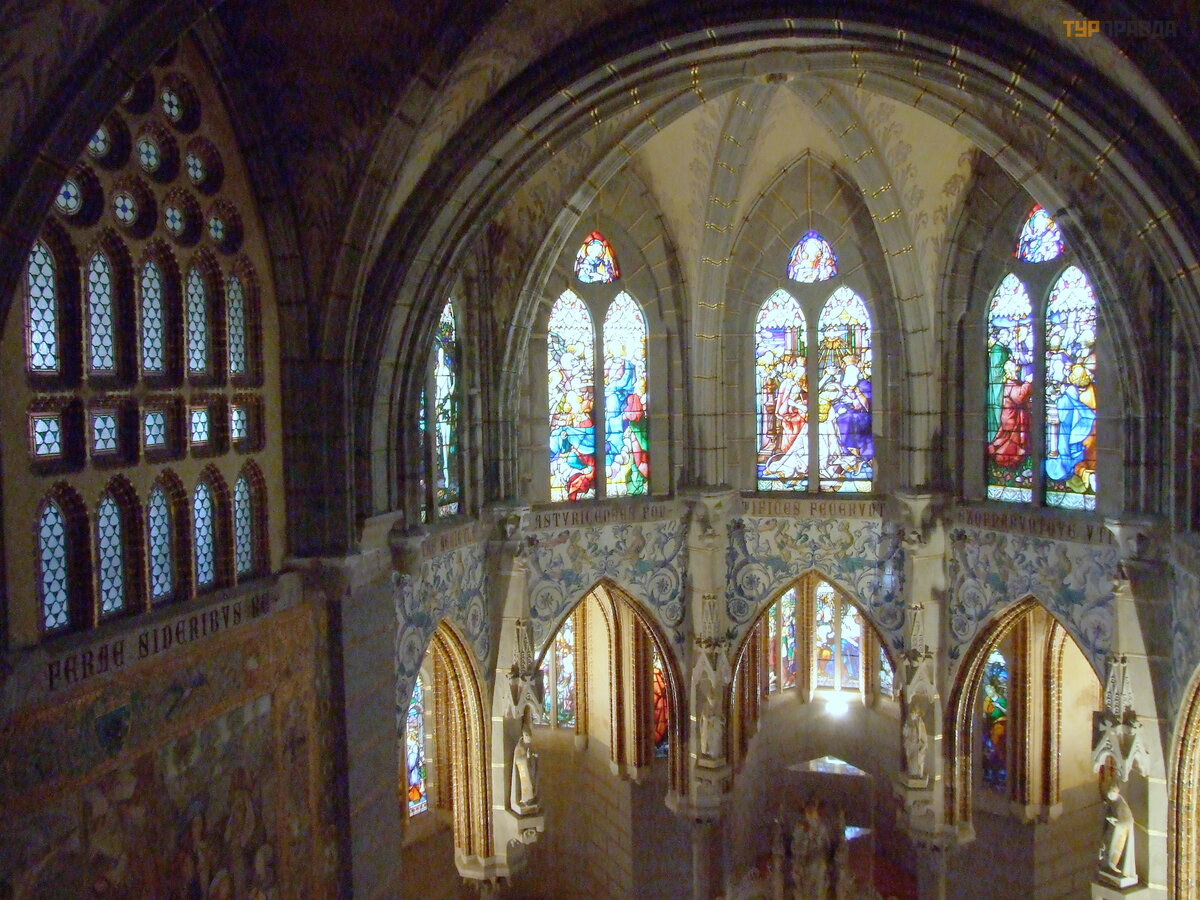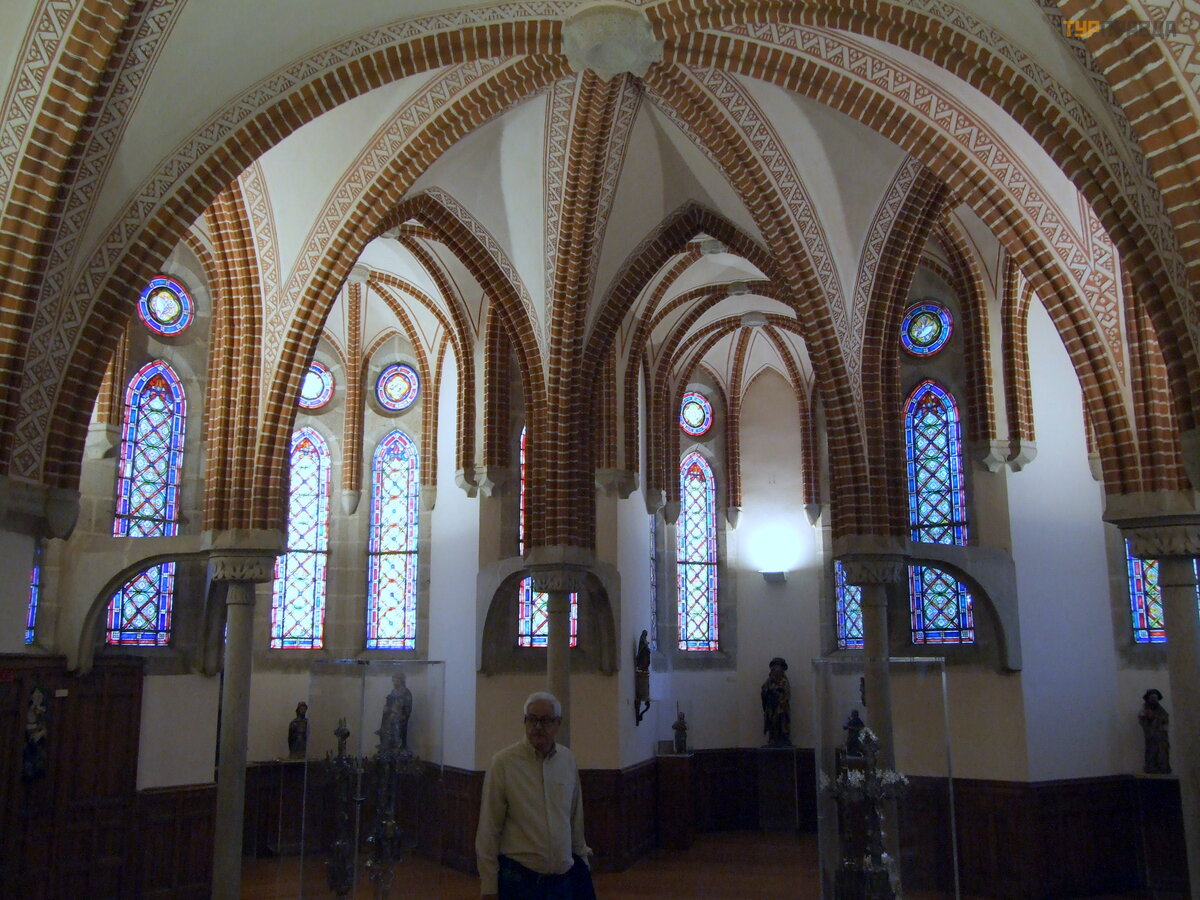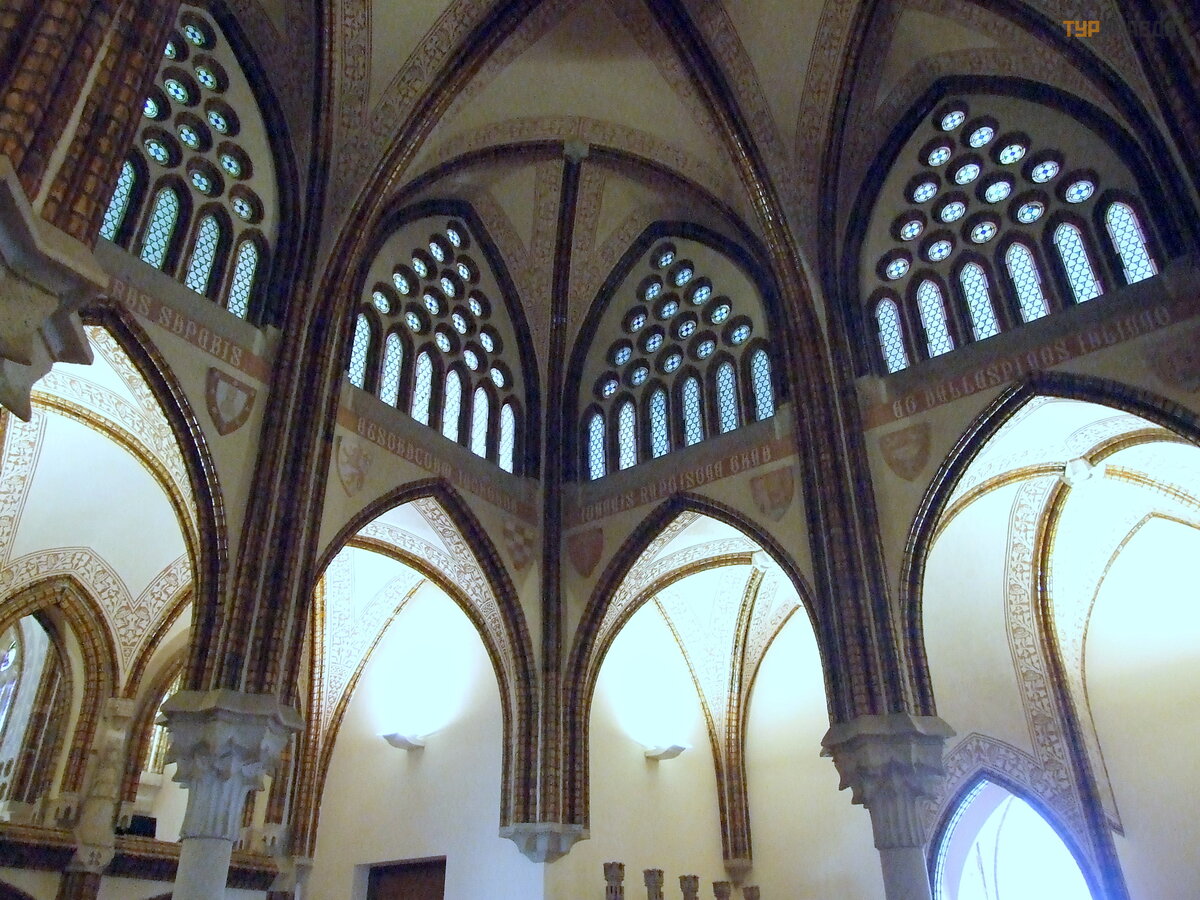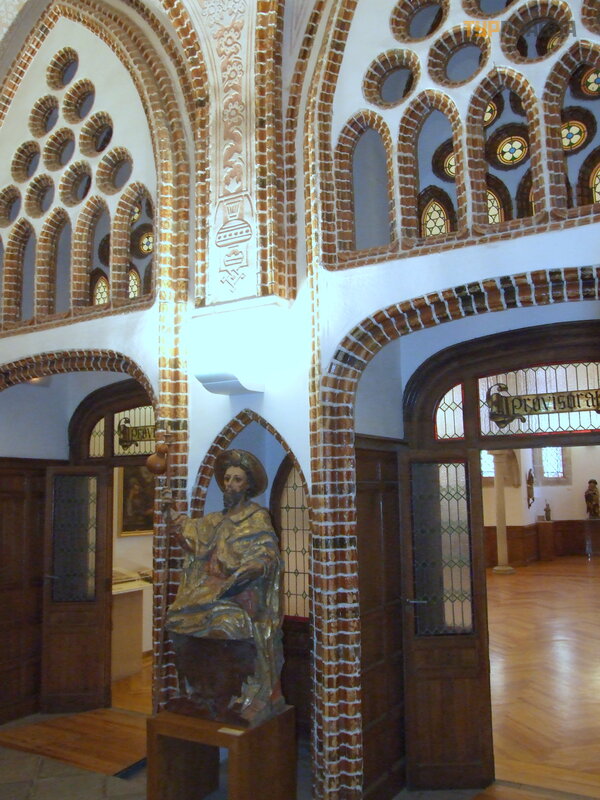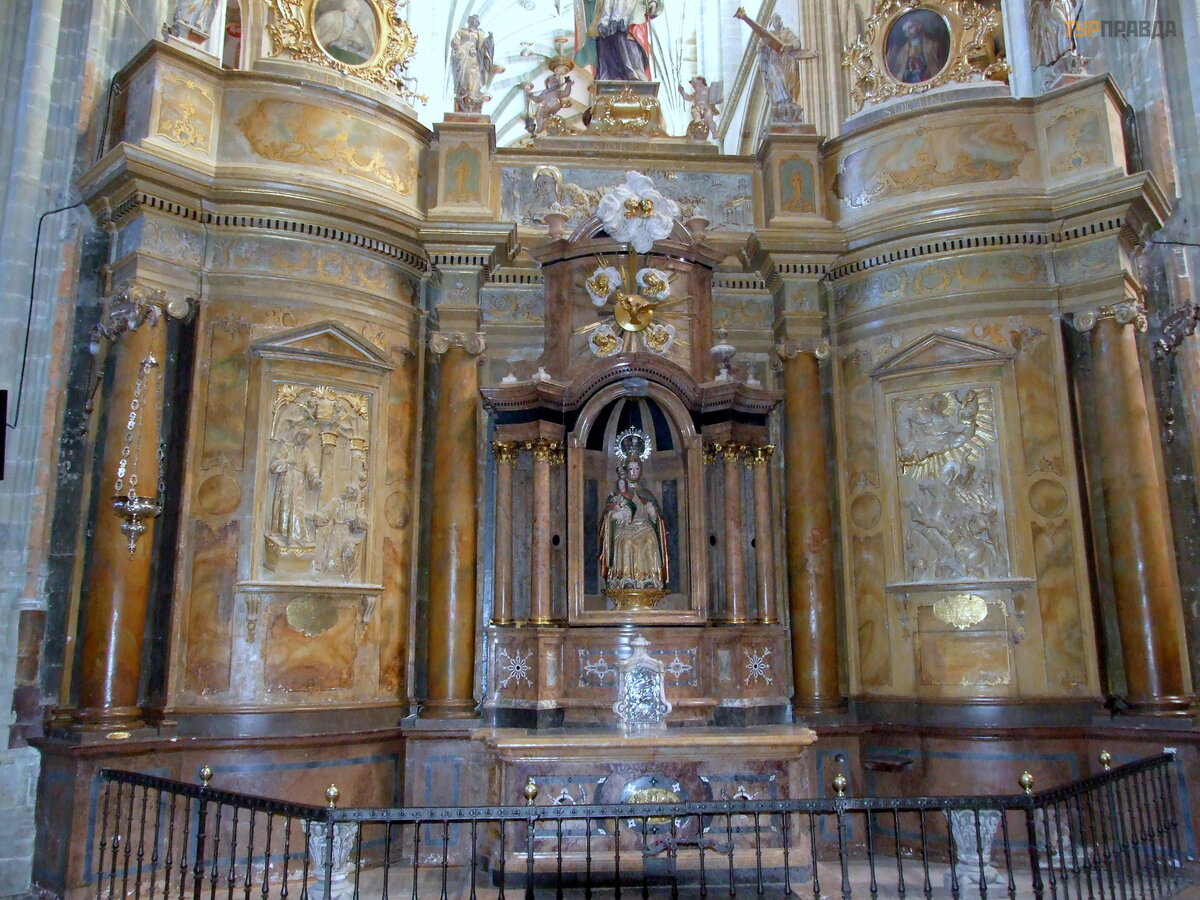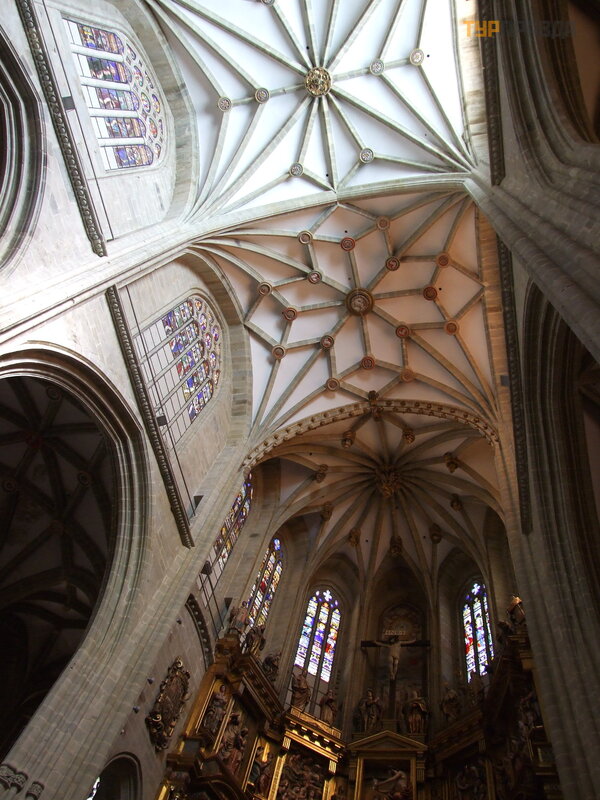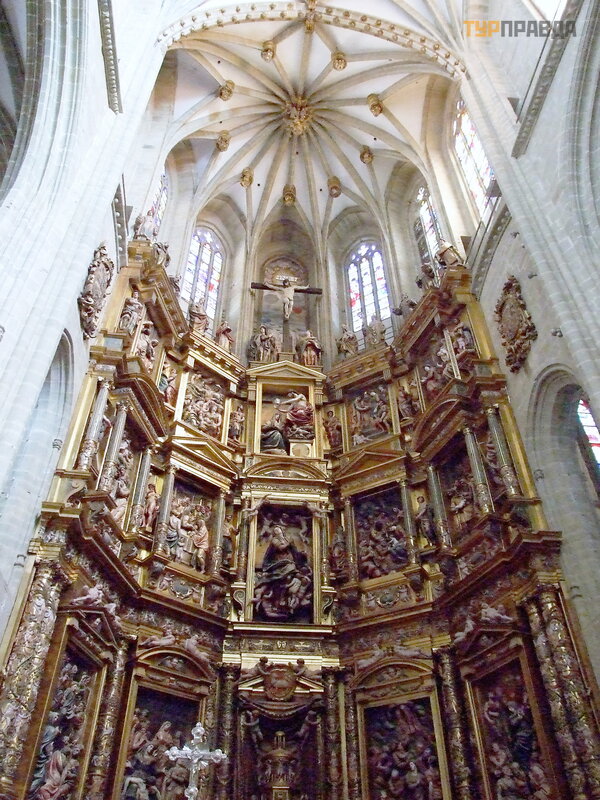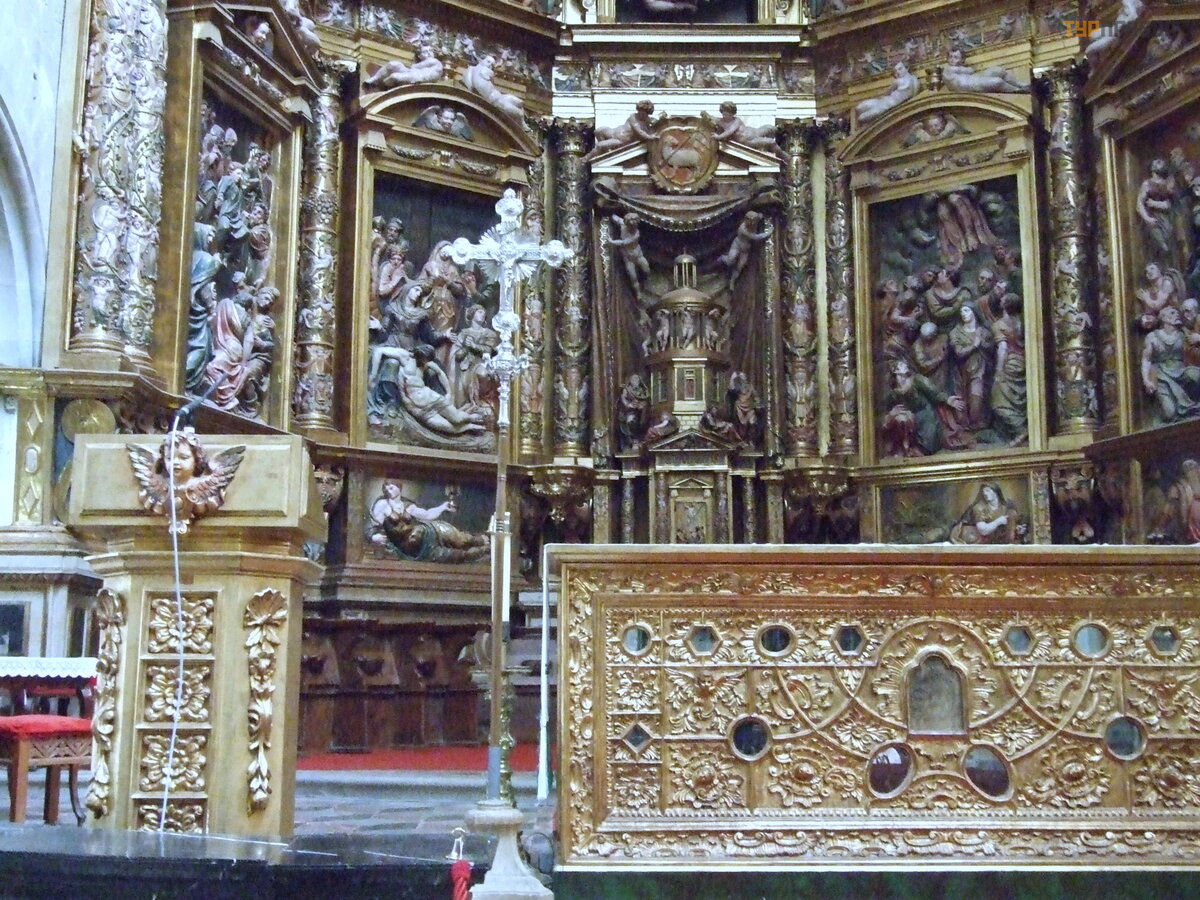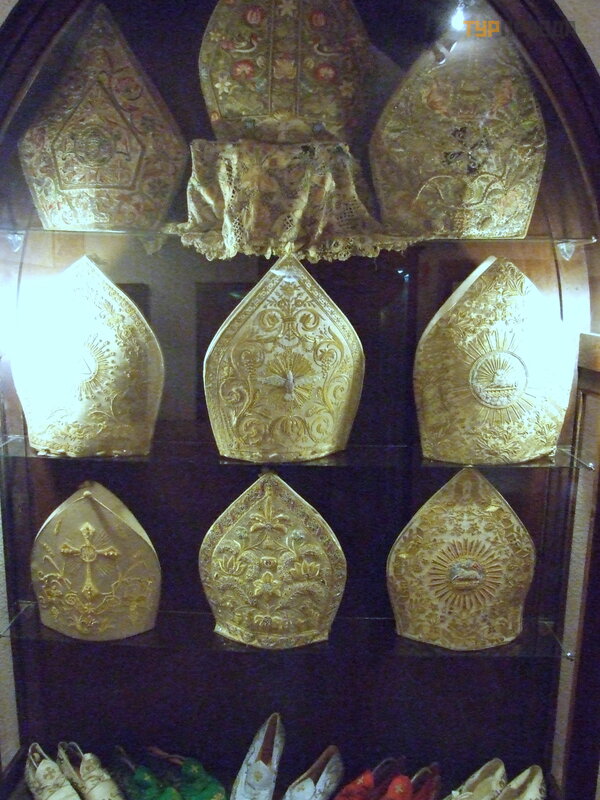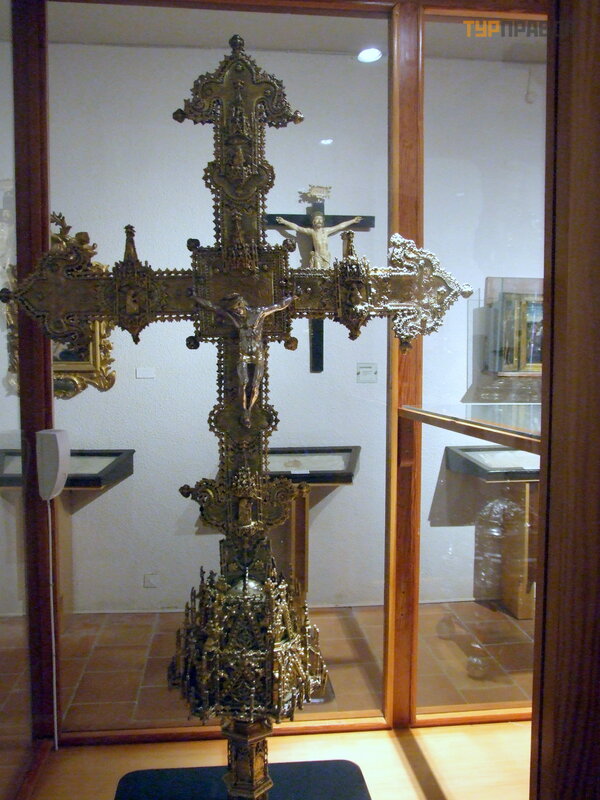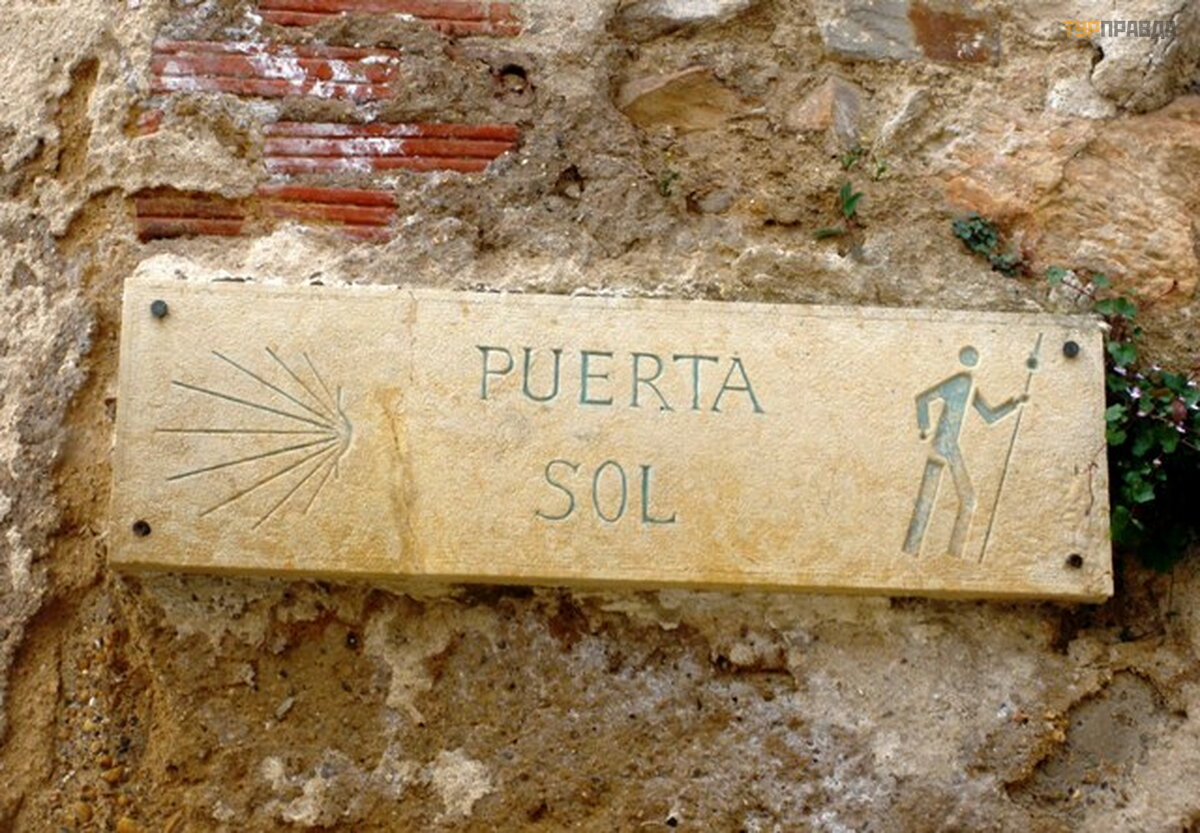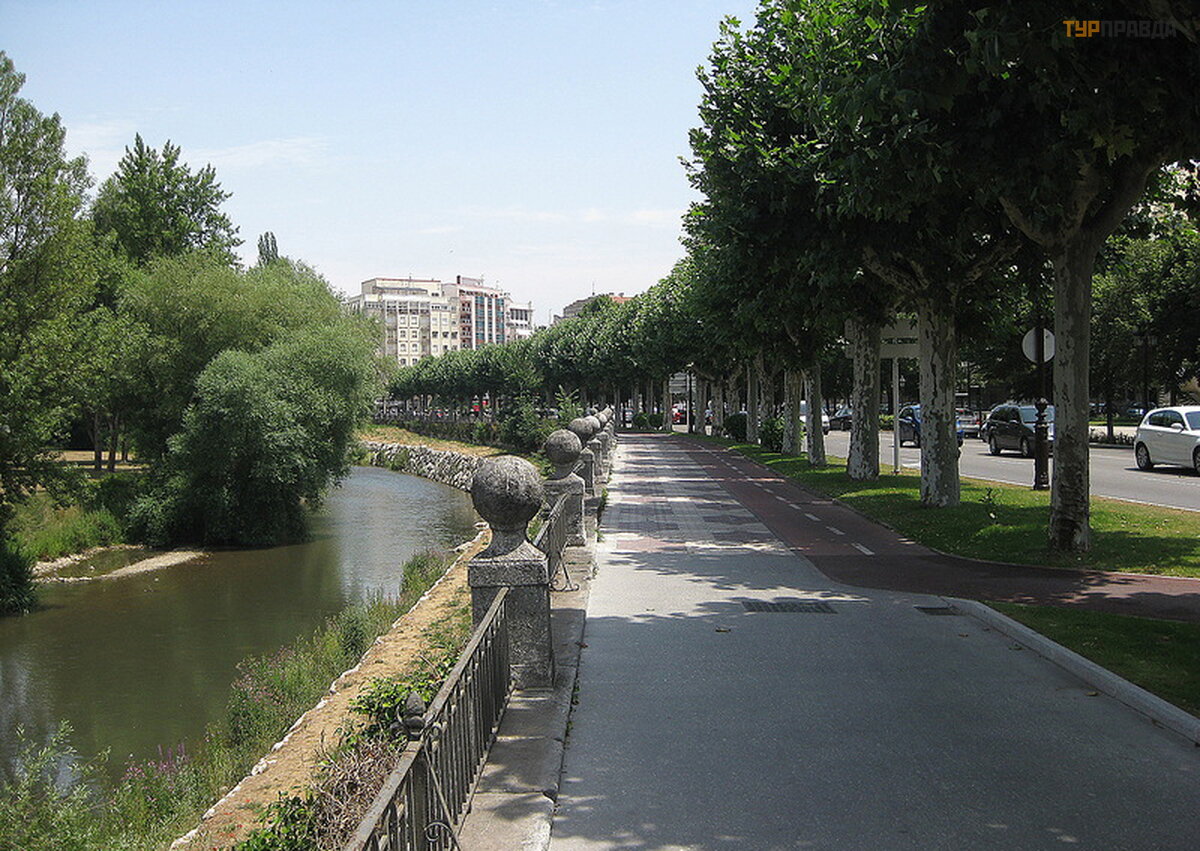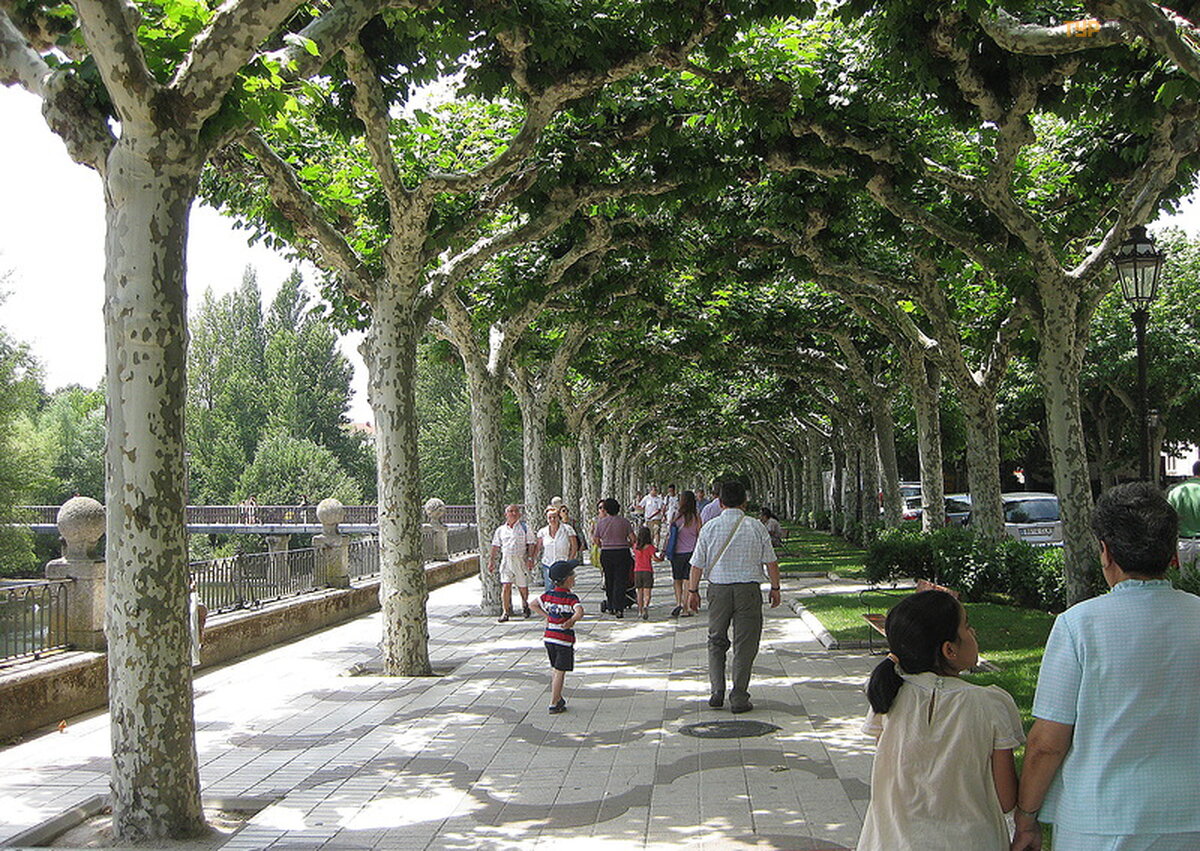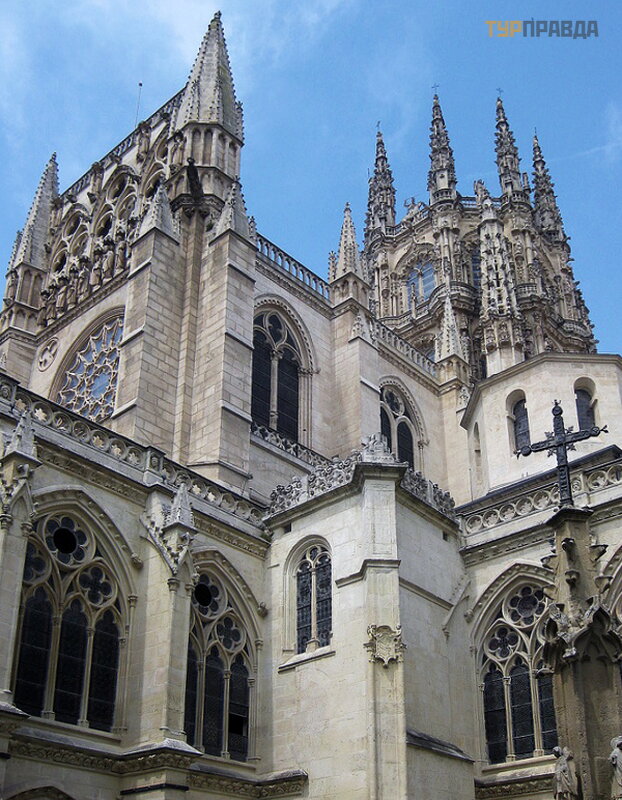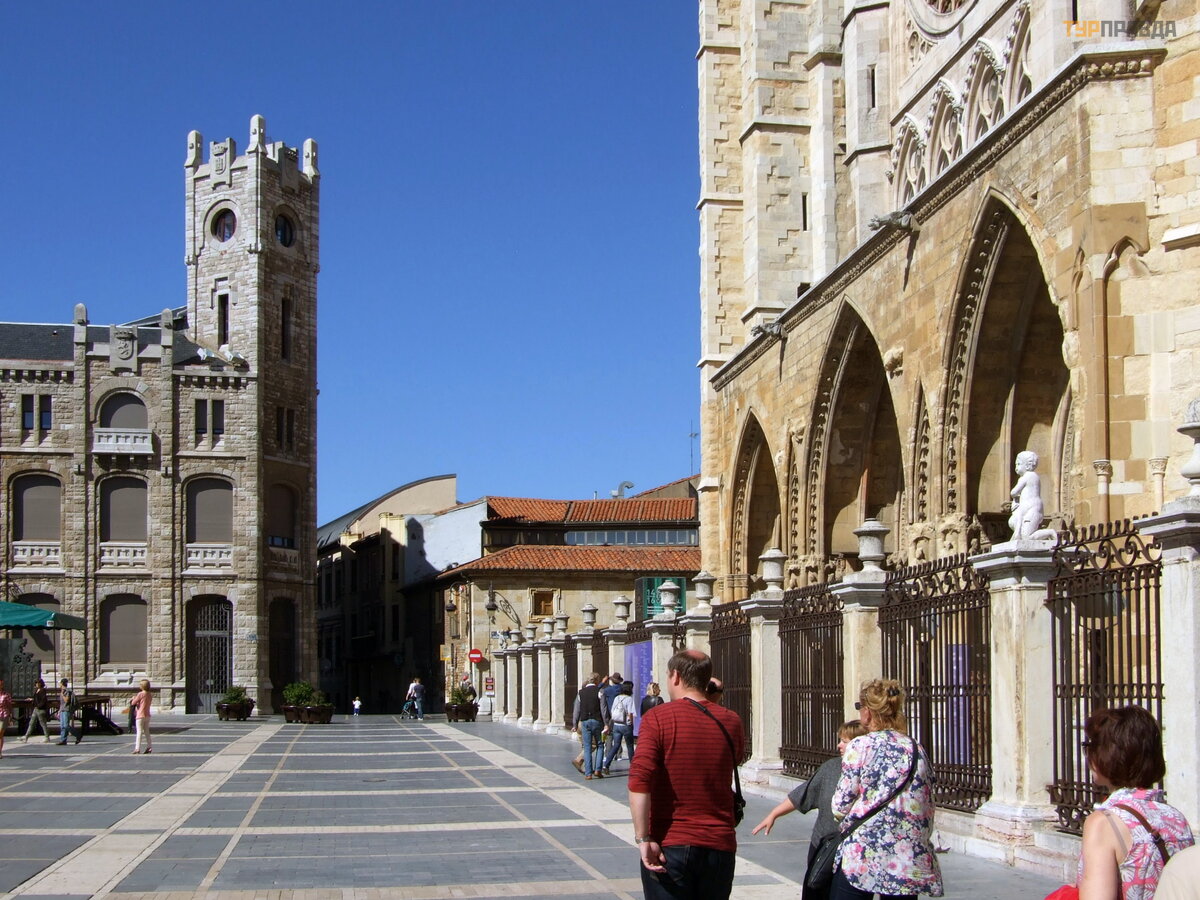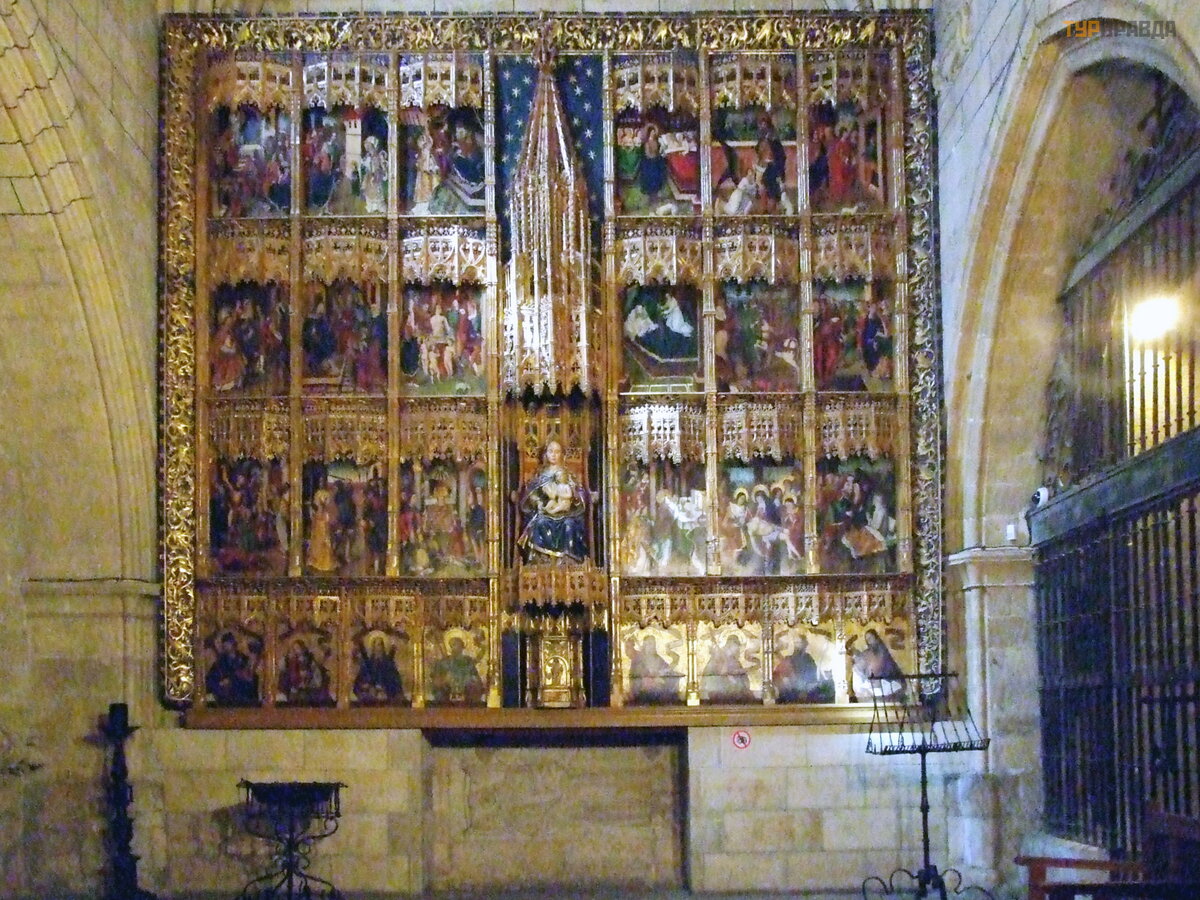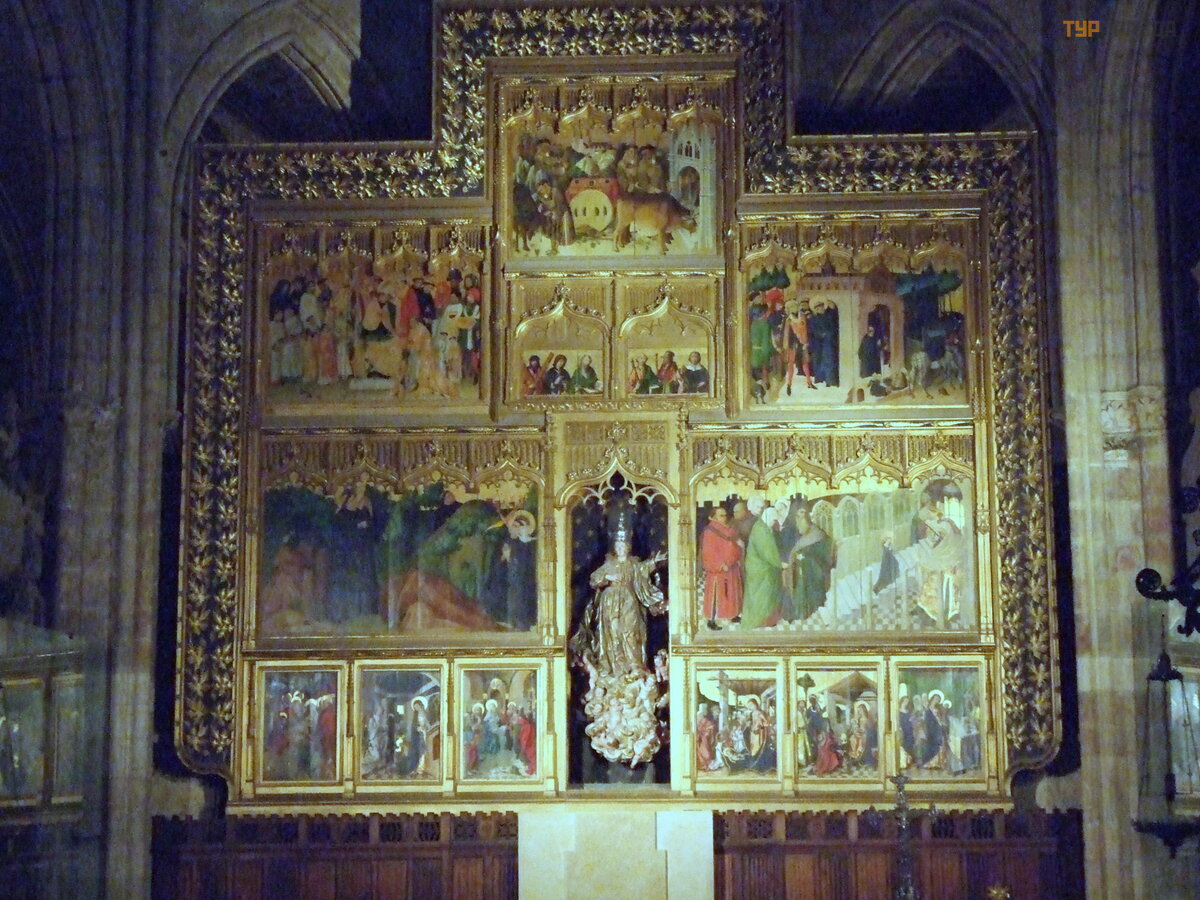The Pilgrim's Way, Part 4

Day 7
In the middle of the trip, the organizers decided to diversify the excursion program with a walk along the picturesque coast. It's just a pity that the weather did not allow swimming.
However, in the morning we visited the 18th century monastery of San Juan, not far from Poyo. The entrance fee was small - 2 euros.
View from the monastery on the sea
Next we arrived at the fishing town of Combarro. A very picturesque place. These "orreos" barns were built on poles so that they would not flood with water and you could load and unload goods directly from the boats.
There are only two streets in the town, well, very picturesque ones!
And this is the central square with a parking lot
The inhabitants of Kombarra are famous for making bruja witches, the main souvenir item. They are said to symbolize good luck. We were somehow afraid to buy home, they look too bad (there are bottles of colored liquors on top - another source of local income).
And so the inhabitants of the town live by fishing and picking mussels.
Then we went to O Grove (this is the Galician name of the town, El Grove in Spanish). This is a resort place on the peninsula, famous for its mineral springs. Actually, we did not manage to examine the city in detail, because. we were offered a sea tour of the bay for 12 euros. The fact is that a huge number of mussels and other seafood are grown in the bay. There is a whole industry there, they make such special mesh columns, on which mussels stick.
There are many such floating platforms in the sea where mussels are taken out.
The price of the cruise included eating these freshest mussels (eat to satiety, without restrictions) and white wine (also drink without restrictions). It's good that our guide warned us to take butter with us from breakfast. Since the stomach can not bear such an amount. It is very interesting to watch the tourists later (there are many who want to ride), everyone stands at the entrance with serious faces, but the visitors all laugh, sing and dance.
Then we loaded onto our bus again and crossed the bridge to the island of La Toja. The island is a purely resort place with hotels, the sea, and a pine forest. Beauty!
The island is famous for the chapel of St. Sebastian. The walls are lined with shells
Here I ran out of charge in my camera and there were no more shots for that day.
Day 8
Here we are already turning from the northern coast of Spain to the southeast. The first city was Astorga, in the province of Leon, which is also the municipal center of the Maragateria region (there is such a people in Spain - maragato). The city has an ancient history, founded by the Romans in the year 14. Part of the walls of the 3rd-5th centuries survived from the Roman Empire.
The main sights of Astorga are the nearby Cathedral and the Bishop's House, designed by Gaudí . Each ticket is 3 euros, the complex is 5 euros.
Here is another masterpiece of Gaudi: I must say that contemporary architects did not understand the great master. So in Astorga, after the death of their patron, Bishop Grau, they immediately began to put spokes in his wheels, as a result of which Gaudi, tired of fighting, interrupted work, the roof was erected without him.
The interiors of the palace are pierced by the sun, so it was difficult to shoot.
Now let's move on to the Cathedral. It can be seen that Gaudi, when building the Bishop's Castle, took into account the peculiarities of the architecture of the cathedral. The powerful Gothic cathedral was begun in the 15th century, and work continued until the 18th century.
Here is the treasure:
After visiting soboa and the palace, eam was offered an excursion to the Chocolate Museum, because. Astorga is also the "Capital of Chocolate" in Spain. But my wife and I decided to wander around the city and buy chocolate in the stores that are on every corner. Chocolate is tasty, of course, but after Switzerland, Belgium and Italy there were no special enthusiasm. But for souvenirs to friends and acquaintances - it's the most.
There are not so many residents in the city, but there are many tourists and pilgrims, because. Astorga is one of the cities of the "Way of Santiago"
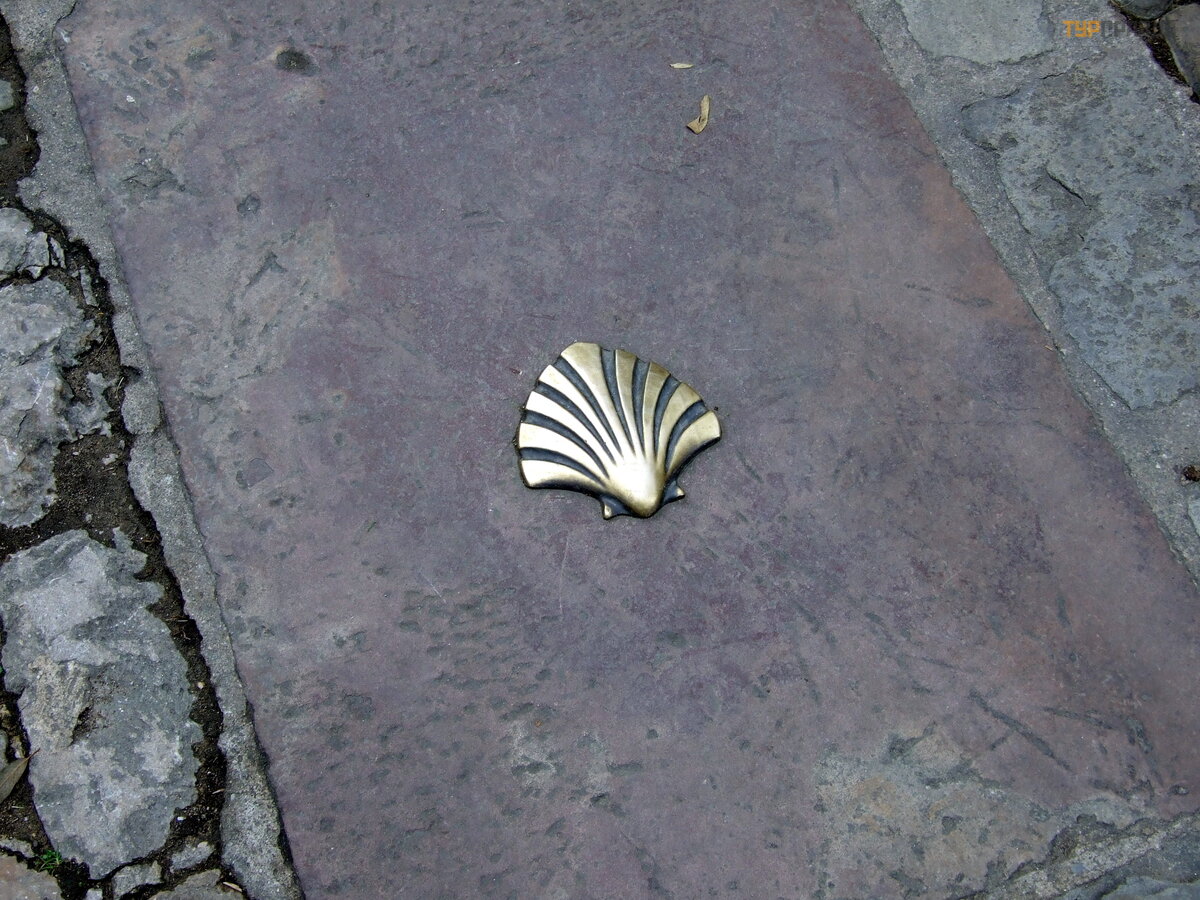 Here is a sign on the pavement
Here is a sign on the pavement
 And this is the main Plaza of Spain with the town hall
And this is the main Plaza of Spain with the town hall
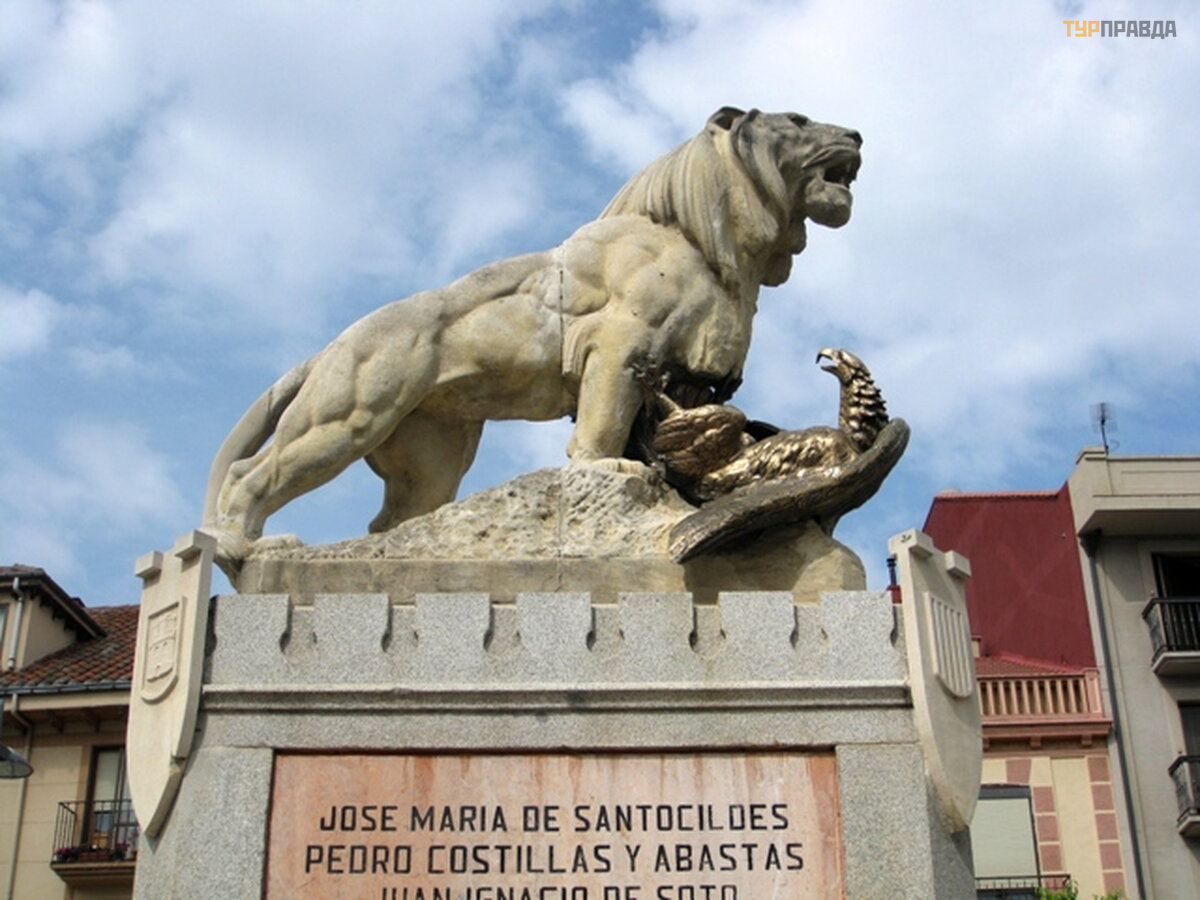 And this is a symbol of Spain's victory over Napoleon. Lion - Spain, eagle - France
And this is a symbol of Spain's victory over Napoleon. Lion - Spain, eagle - France
Well, the trumpet calls, and we drive further to Burgos (BurgAs is in Bulgaria), for a long time in the Middle Ages the capital of Castile. The Spaniards consider Burgos almost the pole of cold in the country. And it is not clear why, whether the city is located there, or the wind... However, the weather was warm and we examined the city with pleasure. Oe lies along the Arlanson River, the embankment is like a picturesque park.
And this is the last gate from the Middle Ages.
The main attraction of Burgos is the Gothic Burgos Cathedral. The cathedral is simply huge, both outside and inside.
